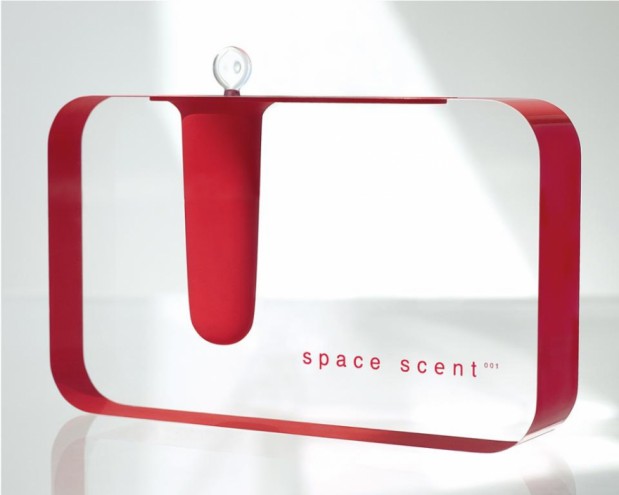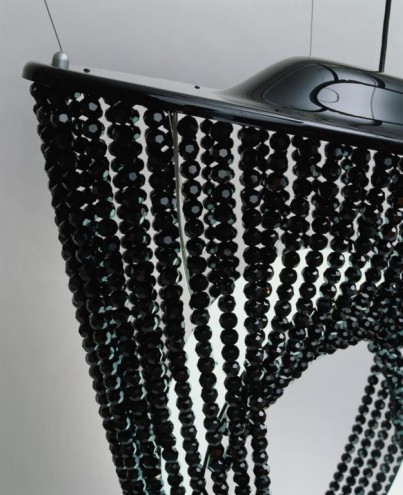First Published in
Industry pundits dub Swiss-born Yves Béhar "The Brand Man". That's because he's a Mr Fixit, who'll come in and lift an ailing brand from its aesthetic and economic doldrums by telling customers stories about the brand to which they can relate.
One of his most famous interventions is the launching of a range of bright beach sandals he convinced Birkenstock to manufacture. This move away from the company's tried-and-tested output not only cemented its existing consumer base, but the new "Birkies" won over a whole new generation of foot-friendly, eco-loving fans too. This is typical Béhar magic. The Brand Man then went on to bring out lifestyle accessories and clothing for Mini Cooper (after all, why should a car company sell only cars to its clients?) - a decision that was, in fact, perfectly in keeping with the way this classic vehicle has been reinvented for the modern consumer. All because, he asserts, consumers desire products that tell stories. Which is also why Design Indaba asked him to tell us his own tale.
You state that the defining moment of a design happens when it is placed in the market. Why? Surely this is only the latter part of a process of definition, starting with the initial and equally important phases of design layout and manufacture - phases that would obviously precede a design's emergence in the market?
What I mean here is that the total sum of the earlier phases of the process, such as the story and emotional part of the design formulation and creation, is either successfully understood at the time of the launch or not. So when the product launches, the reaction often matches the design intent.
Your designs have been widely recognised - there's the Chicago Athenaeum Good Design Award (2004), the IDEA/Business Week Gold Excellence Award (2003), for example - but what do you find more exciting? Designing products or formulating brand strategies for other people's products? Or don't you draw this kind of distinction yourself?
It's always nice to be recognised by your peers, but for me I justify the work by its integrity and not by its critical and marketing success. Products or the experience are always at the centre of the projects we take on. The branding and communication strategy is a way to extend and communicate the story.
Nike, a huge, multinational retailer, and Hussein Chalayan, an adventurous British fashion designer, are on your books. While they're both involved in clothing, they're radically different in their positioning. Yet you manage to retain these diverse brand names as clients. What's the link? Is there a set philosophy or approach that you adopt when assessing your clients' needs? If so, what is it?
I don't think the size of the client has ever been the main reason to do a project... Since we do not design from a stylistic point of view, what our diverse group of clients wants from us are ideas and innovative ways to bring them into a product. I have always worked with small eponymous brands and supporting and enhancing their vision brings some great learning. On the other side of the spectrum, the multinationals often offer us the opportunity to propose ideas that demand important manufacturing and/or technological investments.
In the early days, you were at Frog Design in Silicon Valley, and you did some work for Apple computers. What was your involvement there? And what do you think of the direction that Apple has taken? If "fuseproject", the design studio that you founded in later years, were to have had Apple as a client, what - if anything - would you have done differently with this brand?
I worked on three or so projects for Apple while working for Lunar Design. This was an interesting time, as the personal computer was being popularised by Apple, while the PC industry was playing catch-up. Interestingly enough, Apple has done an excellent job maintaining or even increasing their lead, mostly thanks to great design, and an entire organisation dedicated to making what the designers propose.
The San Francisco Museum of Modern Art (SFMoMA) mounted a "futurespective" exhibition of your output. How does this make you feel - smug or terrified? Just kidding. But often designers say that their earlier work embarrasses them because there is so much that they would have handled differently in hindsight. Does your earlier stuff have a rawness that you entertain a certain kind of affection for, or would you prefer to sweep some of it under the carpet?
What needed to be swept under the carpet already has been! Seriously though, the ability to edit, and look at one's work critically, is always what will make one progress and learn. The SFMoMA show actually forced me to edit my studio's work, while giving a good overview of the wide diversity of work my firm pursues: from commercial technology products, to beauty and conceptual products for galleries and museums.
And which projects make you justifiably proud?
It is more a satisfaction to see things experienced than pride per se; perfume 09, the Birkies, MINI motion watch, space scent, Philou, and the Swarovski Nest and Voyage chandeliers are some of my favorites.
What new pitches or which new clients are you working on at present, and can we expect to see any of this work at the upcoming Design Indaba conference?
Sony, Magis, Danese...
You speak a lot about stories. You say that: "consumers want products that tell stories, have magic, and inspire". So do you think brands, and the legends we weave around them, are like the fairy tales of the contemporary world? That would make you one of the modern-day Brothers Grimm, right?
Less fairy tale, and more story telling that explains and engages the user with the product. Often these stories are anchored in the companies histories, which in turn can be resurrected through new objects.
Did you love stories as a little boy? What was your favourite?
Le Petit Prince by Antoine de Saint-Exupéry. It sits on my bedside table always.
Your design philosophy is rooted in developing consistent stories for your clients and their products. This seems to me an ancient and revealing human archetype. Man has always needed stories to understand the world. You seem to use this psychology to great effect in marketing. Do you agree?
Humans do want to connect and communicate, it is second nature. Design at its best has the ability to do that.
What is your take on the anti-brand movement? A cheeky question perhaps, but is there a copy of Naomi Klein's No Logo on your bookshelf?
I like brands, and I like the anti-brand movement as well. At best, they are both vessels to treat customers as intelligent beings rather than a mass market.















